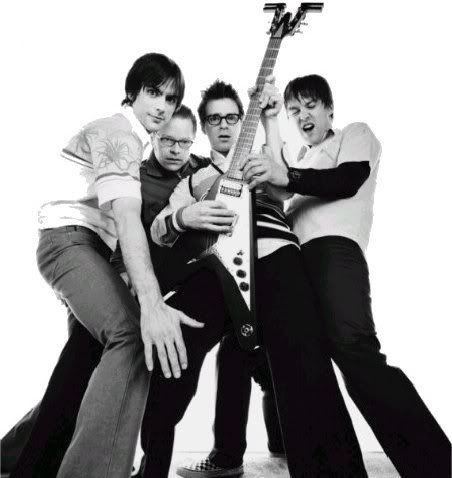 Whereas ethos may be the strongest and most obvious rhetorical appeal used by Weezer in "Buddy Holly," logos also plays a near equal role. The song is well led into by a television anchor standing outside Al's Restaurant in Kenosha, Wisconsin from the 70's show "Happy Days." The video then leads into the restaurant where the viewers see owner Al Molinaro and the Weezer band members standing behind him. Al continues to introduce them before the band begins to play.
Whereas ethos may be the strongest and most obvious rhetorical appeal used by Weezer in "Buddy Holly," logos also plays a near equal role. The song is well led into by a television anchor standing outside Al's Restaurant in Kenosha, Wisconsin from the 70's show "Happy Days." The video then leads into the restaurant where the viewers see owner Al Molinaro and the Weezer band members standing behind him. Al continues to introduce them before the band begins to play.The restaurant seems fairly trendy with pennants of prominent area college pennants such as Purdue, Wisconsin and Northwestern on the walls and younger teens as patrons. The teens begin to dance around and have a good time when the music starts playing indicating they obviously enjoy it. Much of this plays into the lyrics of the song that talk about how teenagers idolize celebrities and even dress and act like them. Each of the band members dress very similarly to a "Buddy Holly" type look and when the teenagers start dancing along with the music, it hows how the celebrity status of the band instantly makes them good, somewhat regardless of the quality.
After the second time through the chorus, the video takes an intermission with a "To be continued..." across the screen much like the end of an episode or a commercial break as if the video were an episode of the show. This could also show how the trends of what was just said in the chorus ("I look just like Buddy Holly...I don't care about that") will continue as being true. In the 1950s, fads of dressing and acting like celebrities were just starting to become prominent, so by saying that this will continue shows how through the past few generations, we have idolized popular culture in the world.
The title "Buddy Holly" itself indicates the way our minds wrap around a certain key name and take it for all it's worth. Even though there are surely many better names for this song, "Buddy Holly" is very accurate to the theme because it shows the prominence of the celebrity image being the total focal point for the piece.
